Unit 4 Body language warming up and reading
文档属性
| 名称 | Unit 4 Body language warming up and reading | 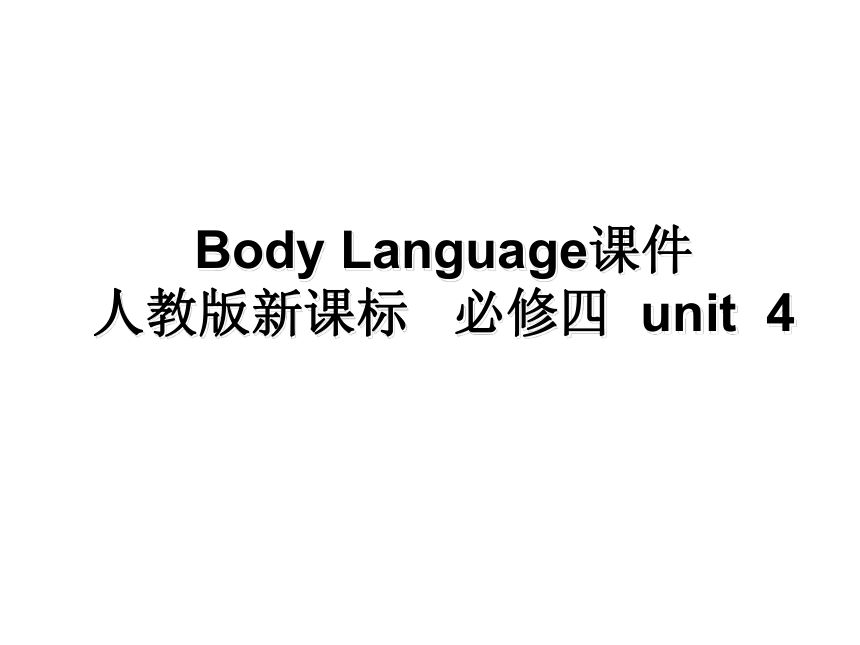 | |
| 格式 | rar | ||
| 文件大小 | 1.8MB | ||
| 资源类型 | 教案 | ||
| 版本资源 | 人教版(新课程标准) | ||
| 科目 | 英语 | ||
| 更新时间 | 2011-02-16 19:13:00 | ||
图片预览

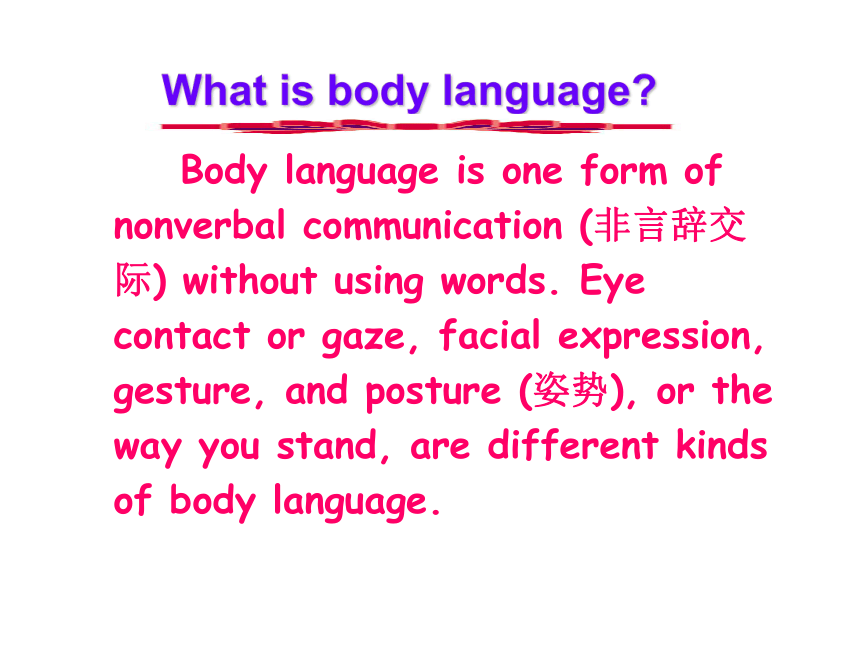
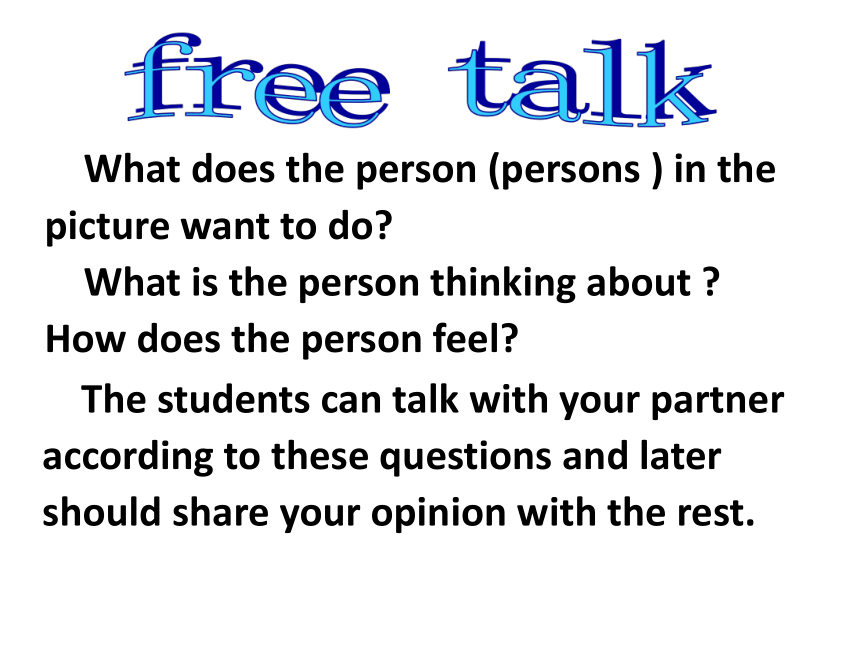
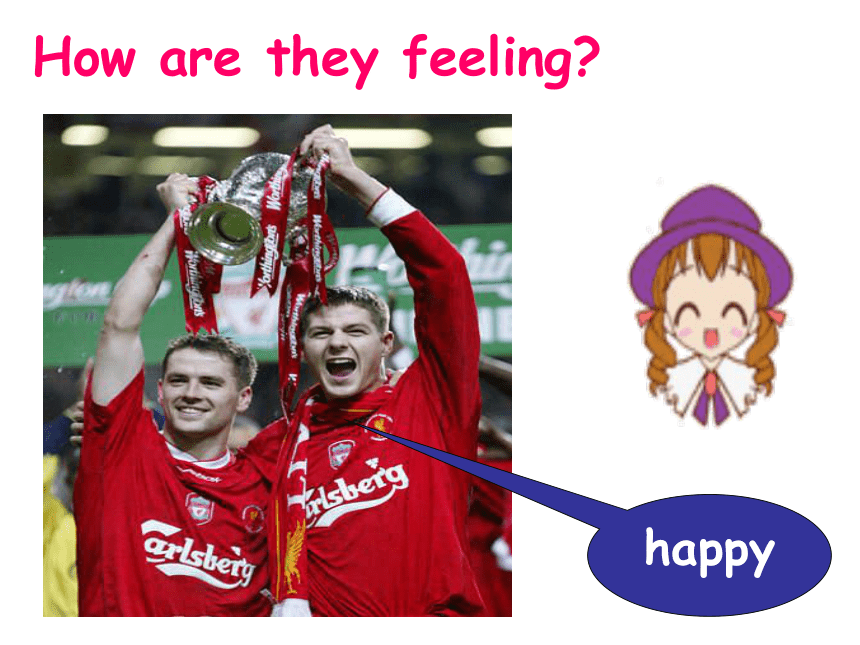
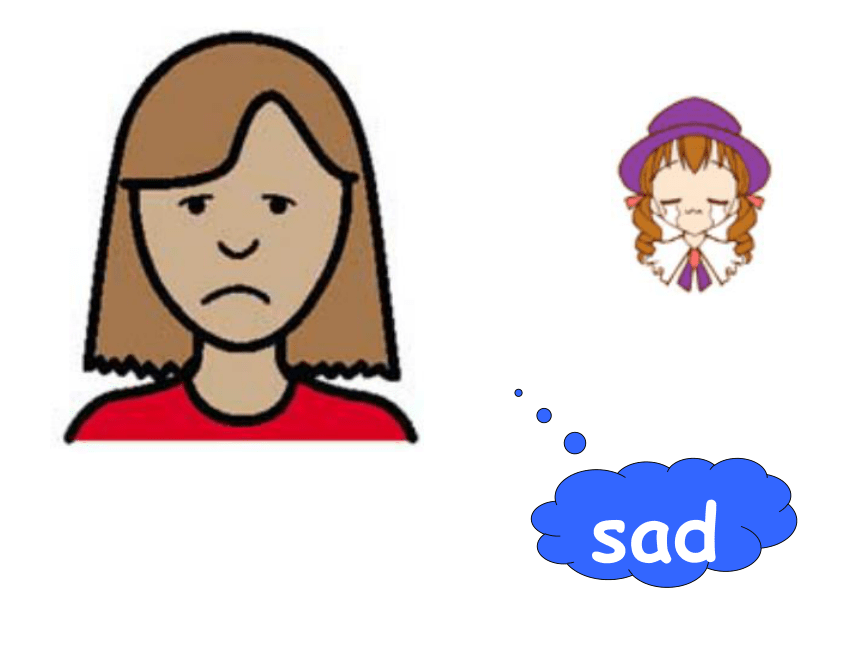
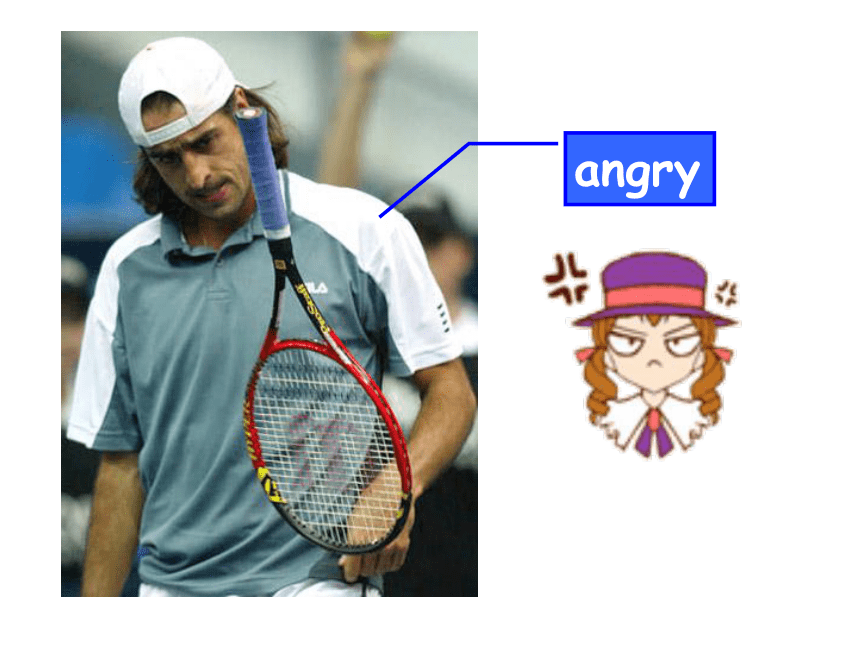
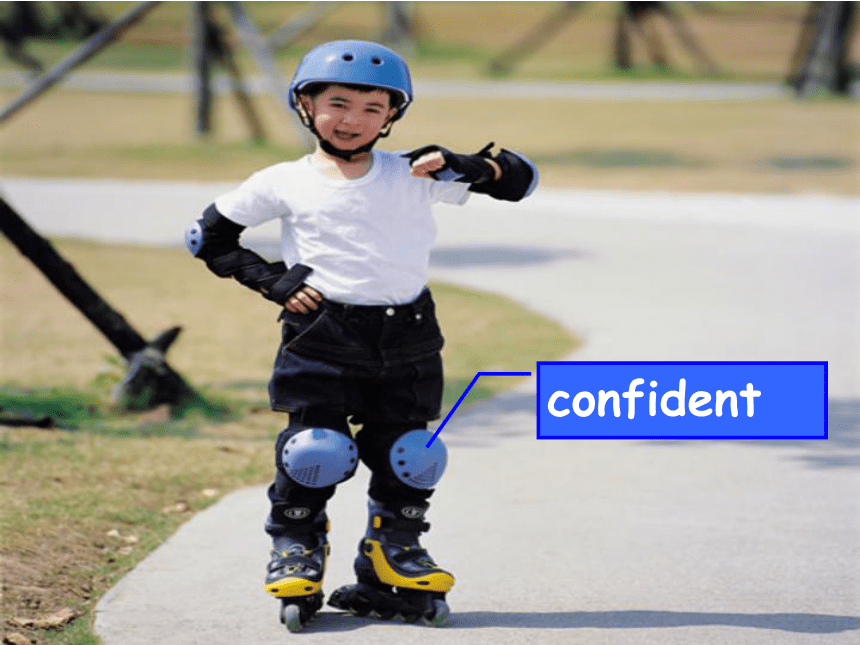
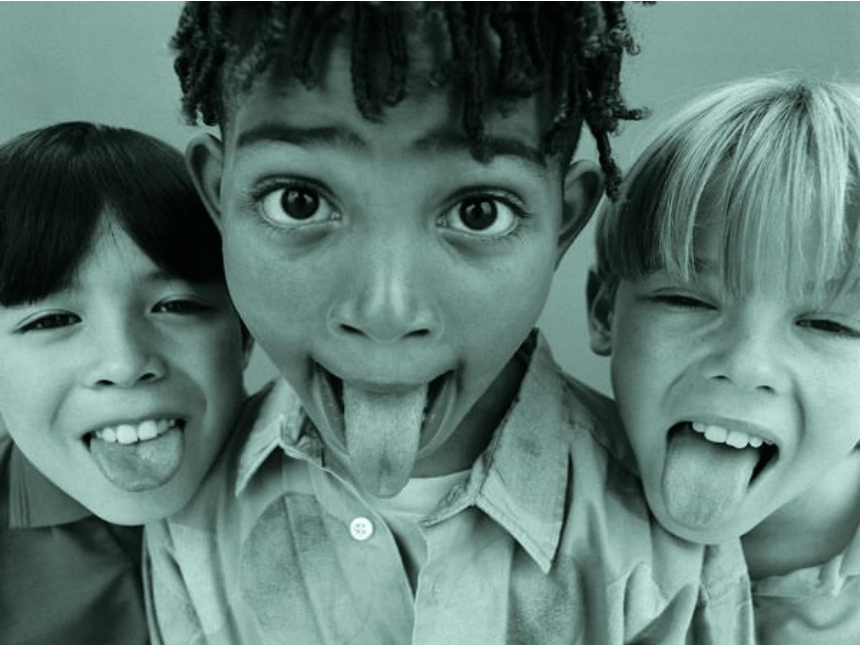
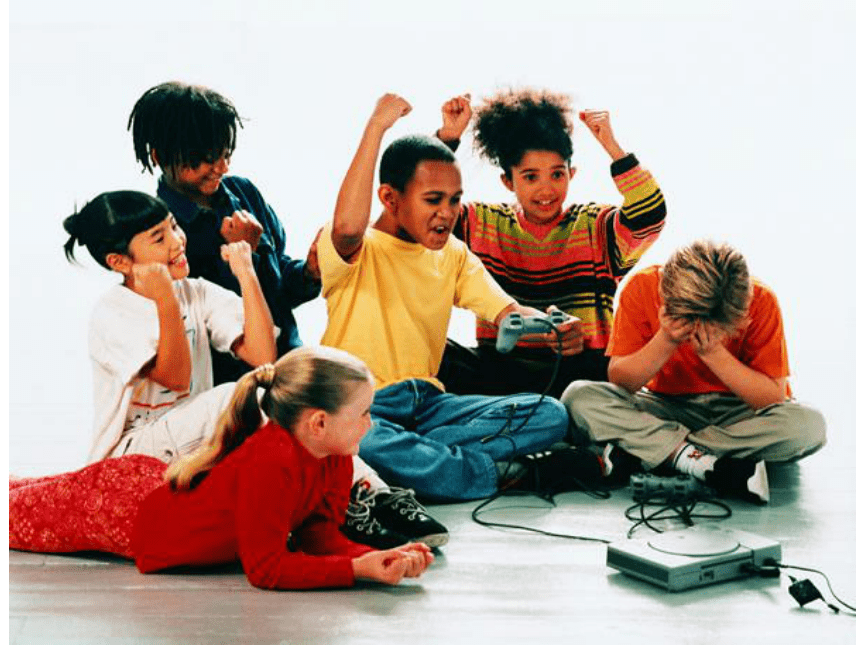
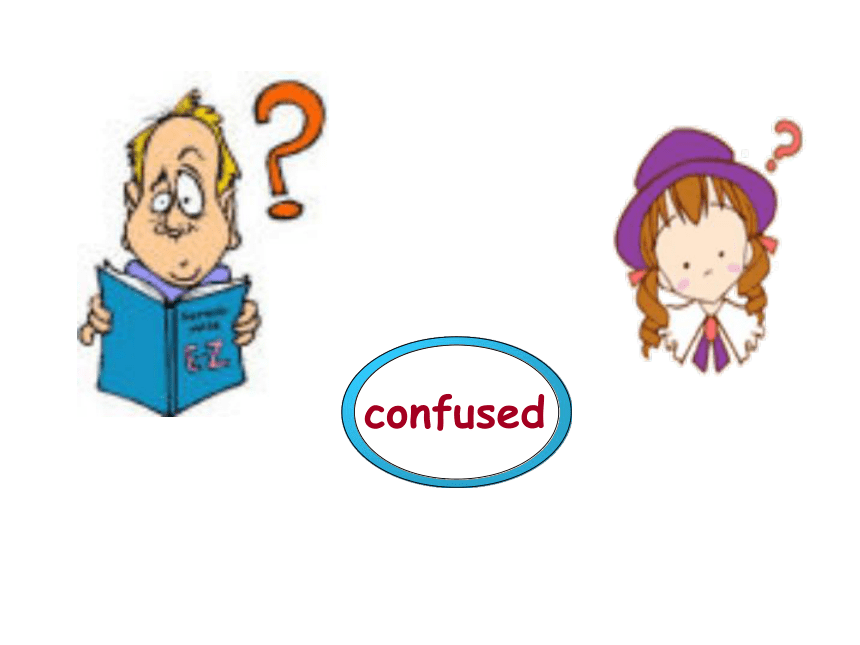

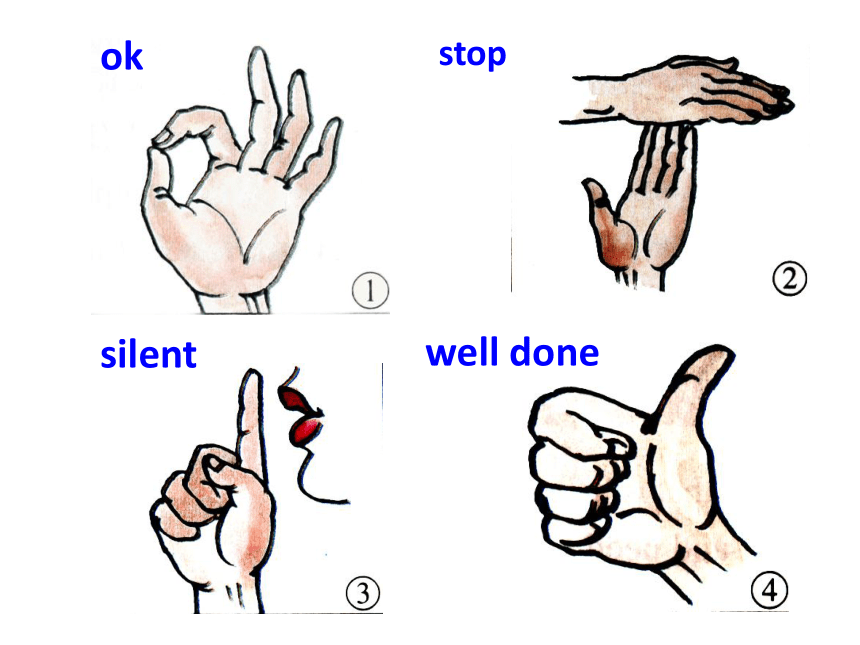
文档简介
课件70张PPT。Body Language课件
人教版新课标 必修四 unit 4 What is body language? Body language is one form of nonverbal communication (非言辞交际) without using words. Eye contact or gaze, facial expression, gesture, and posture (姿势), or the way you stand, are different kinds of body language.free talk What does the person (persons ) in the picture want to do?
What is the person thinking about ?
How does the person feel? The students can talk with your partner according to these questions and later should share your opinion with the rest.How are they feeling?happysadangryconfidentconfusedguess, guess, guess, gesturesokstopsilentwell donevictoryapplauseGood!Bad!
Come here!Good luck!Me?I don’t know! Talk about the gestures in a basketball match. What do they stand for? Be ready to act these commands, warnings or prohibitions out. You can discuss with your partner what people would do with their body language first. TalkingReadingWhat’s the purpose of language?
Language is used to communicate or
tell people thoughts, feelings and
reactions.
What do you think “body language” means?
Body language is the use of actions,
gestures. Posture and expressions to
convey emotions.Can you answer the following questions? They will look unhappy; they might cry;
they will not laugh. How can you tell if someone is
sad even if they do not speak ? Give an example of how you can communicate a feeling to someone who does not speak your language ?I will use my body language. If I’m angry.
I might turn away and not talk to others.
If I am happy to see someone, I might
smile and hold out my hand or open my
arms. Reading
Communication: No Problem?the British ladythe Columbianthe Japanesethe Canadian Fast reading.
Read this passage within five minutes and answer these two questions.
1 How many characters are mentioned in our passage. Who are they ?
2 Do all members of all cultures behave the same way ?Seven characters. They are Mr. Garcia, Julia
Smith ,George Cook, a Japanese, Ahmed
Aziz, a Chinese , Madam coulon.No ,they don’t Second reading Part 1people presentpurpose businessmen from foreign countries
local businessmenpeople representing the Chinese governmentinterested1 . Who will be present at the meeting?
2 . Why are people visiting China?meetMr Garcia (Columbia)
Julia Smith (Britain)
Visitor (Japan)
George Cook (Canada)
Madame Coulon (France)Matching the people and their different ways of greeting (para2&5)shakes hands and kisses others twice on each cheek
bows
shakes hands
approaches others closely and touches their shoulder and kisses them on the cheek
does not stand very close to others or touch strangers Part 2Divide the passage into four parts and find out the main idea of each part.Part 1 :
Part 2:
Part 3:
Part 4:(Para1):You are sent to Pudong Airport to meet business people.(Para6): Summary of body language.(Para 4 and 5):Different peoples have different body language.(Para 2 and 3) : Examples of learned or cultural “body language”.Find out the two mistakes the writer found in the airport:Mr. Garcia Julia SmithThe first mistakefromfrom(Columbia )(Britain)He approaches Ms Smith by _______ ______ _________ and _______ her on the ________.She ______ ________ appearing _________ and take a few steps _______ ______ Mr. Garcia.shouldertouchingherkissedcheekstepped backsurprisedaway fromThe second mistakea JapaneseGeorge Cookfrom(Canada)He ________ ________ _______ ________ to the Japanese.He ________ to Mr. Cook and his nose _________ Mr. Cook’s _______ ________.bowedtouchedmovinghandreached his handout Read paragraph3-6, then decide if the following statements are true (T) or false (F) and correct the error.TFT FEnglishmen often stand close to others or touch strangers as soon as they meet.
Most people around the world now greet each other by kissing .
Japanese will bow to others as greeting.
People from Jordan will move very close to you as you introduce yourself to them.
Some body languages in some countries are good while some countries’ body language are bad.F Main idea of each part.
part I (Para.1) : You , airport
_________________________________
_________________________________
Part 2 (Para.2-5): example , body language
__________________________________
_________________________________
Part 3 (Para.6) general , cultures
____________________________________
____________________________________
You are sent to meet business people
At Putong Airport.Examples of learned or cultural
body language Body language is general but not all members
of all cultures behave the same way.
Read the passage again and then answer the following questions:(P.26)Read the text carefully and then answer the following questions.1. Why are the people visiting China?
2. What parts of the world are not represented by the visitors?They are visiting China because they’re interested in the development of business in China.Africa, Australia and Central America. 2. Africa, Australia and central
America are not represented.3. Why is Julia Smith surprised?
4. Why do you move back from Ahmed Aziz? Julia Smith is surprised because Mr
Garcia touches her shoulder and kisses
her on the cheek. You move back because Ahmed Aziz is
standing very close to me.5. What do French people often do when they meet people they know?
6. Can we expect people everywhere to
act the same ? Why ?French people will often kiss people
They know on both cheeks. No, we can’t because not all cultures
Greet each other the same way. 7. Why do you think we need to study
body language ?
8.Is the main character male or female ?
How do you know ?
So that we do not misunderstand
each other. The main character is male.
Ahmed Aziz shakes hands with him, but
does not shake hands with the women. Read the text again and then finish the following form:Approach others closely and are more likely to touch them.Shake hands, do not stand very close to others or touch strangers when they meet. BowShake hands.Shake hands and stand quite close to other men. Nod to women but do not shake hands with them.
My boss has sent me to Pudong Airport to meet
some _________people from many parts of the
world, who are interested in the __________ of
the economy in China.
The first one to arrive is Mr. Garcia from
Columbia with Julia Smith, a British lady,
__________behind closely. I ________them to
each other and I’m _________to see Mr. Garcia
come up to Ms Smith. Just then, in comes a
visitor from Japan, smiling at the time when the
Canadian, Gorge Cook __________out his hand
to him. businessdevelopmentfollowingintroducesurprisedreaches Text retelling: It happens that Mr Cook’s hand ________ the
Japanese’s nose as he bows and they both
________
So you see, people from _________ cultures may not _______others in the same way. English people usually do not _______very close to others or touch the ________as people from Spain, Italy and South American countries do. Most People around the world _________hands when they meet while
____________people will bow..
touchesapologizedifferentgreetstandstrangersshakeJapanese People from Jordan stand quiet ______
to other men and shake hands and kiss
others on the________.
In a word, body language differs in
different cultures and is widely used
in_____________. closecheek communicationLanguage points
1. They will be meeting at a major hotel with local business people and people who represent the Chinese government.
他们将会在大酒店与当地商人和代表中国政府的人们会面。 1) will be meeting 将要见面
will/shall be doing 表示“预料将要发生的动作”,在现代英语口语中用得很多,口气往往比较婉转、随便。
When will they be visiting us again?
你什么时候再来看望我们?
I shall shortly be attending an international conference. 不久,我就要去参加一个国际会议了。2) major adj. 较大的,主要的
The car needs major repairs. 这辆车需要大修。
n. 专业
Her major is linguistics. 她的专业是语言学。
vi. 主修,专攻
I major in biology. 我主修生物。
3) local adj. 本地的,地方的,地区的
Last Thursday he received a letter from the local police.
上星期二他接到了当地警察局的一封信。
be located in 坐落于… …4) represent v. 代表(stand for),象征,标志;
作为示范;作为… …的例子
These stones represent armies.
那些石头代表部队。
represent oneself as/to be 自称是
represent … as 把 … …描绘成(看作)… …
represent … to sb 向某人表示 … …
representative n. 代理人,代表 adj. 典型的,
有代表性的
representation n. 表现,描写;代表,代理2 Four people enter looking around in a curious way. 有四个人走了进来,好奇地四处张望。
1) looking around in a curious way 用作状语,表示 enter的伴随状态。
She sat at the desk reading a newspaper.
她坐在桌子旁看报纸。
Tom went to school, taking a train.
Tom 坐火车去上学。
While reading the news paper, he nodded from time to time. 看报纸时,他不断地点头。
Not having received a reply, we wrote again.
没有受到回信,我们又写了一封。 2) curious adj. 富有好奇心的;有求知欲的;
感兴趣的
Don’t be too curious about things you are not supposed to know.不要对那些你不应该知道的事情太过于好奇。
The tourists were surrounded by the curious children. 游客被好奇的孩子们围起来了。
be curious about 对… …感到好奇
be curious to do 急于做/极想做
It is curious that … …很奇怪。
out of curiosity 出于好奇
in/with curiosity 好奇地3. The first person who arrives is Mr Garcia form Columbia, closely followed by Julia Smith from Britain. 第一个到达的是来自Columbia的Mr Garcia, 来自Britain 的Julia Smith紧随其后。
closely adv. 接近地,紧紧地
He entered the room, closely followed by the rest of the family. 他走进房间,后面紧跟着他的家人。
closely 与close的区别
close adv. 紧紧地,接近地。强调空间距离近,相当于near; closely也有此意,但语气较强,相当于very near.
closely adv.常用来说明动作以怎样的方式进行。有比喻的用法。意为“亲密地,紧紧地,仔细地,严密地” close to +n. 靠近,接近;将近
stand/sit/live close to +sb./sth 和某人/某物站得/坐得/住 得近
4. You introduce them to each other, and are surprised by what you see.
你介绍他们彼此认识,却对你所看到的情景感到吃惊。
introduce sb./sth to sb. 向某人介绍某人/某物
introduce sth into/in spl. 把某物传人或引进某地方
introduction n. 介绍;介绍的内容;导言;引论
make an introduction/introductions to sb. 向某人介绍… … I will introduce my best friend Tom to you.
我要把我最好的朋友Tom介绍给你。
Buddhism was introduced into China in about A.D. 67. 佛教大约在公元67年传人中国。
5. Mr Garcia approaches Ms Smith, touches her shoulder and kisses her on the cheek.
加西亚先生走近史密斯女士,摸了摸她的肩,亲了亲她的脸。 1)approach v. 走近;接近;临近
n.走近;临近;对待、处理的方式
Few actors approaches him in ability.
With the approach of Christmas the water turned colder. approach sb. on sth. 为某事与某人打交道
approach a problem from different angles 从不同的观点研究问题
at the approach of 在快到… …的时候
approach sb about/for sth 向某人要求某物
2) kiss sb. on the cheek 亲吻某人的面颊
The mother kissed her child on the cheek and said good-night.
母亲亲吻了孩子的脸颊,然后道了声晚安。
vt.+sb. in/on/by +the +身体部位
take/pull/grasp/seize/catch/hold/lead sb. by the ear/nose/ hand/arm/sleeve
hit/strike/touch/pat sb. in the face/eye/ stomach/ side/chest/
hit/strike/touch/pat sb. On the head/ shoulder/ nose/ neck/ back6. Not all cultures greet each other the same way, nor are they comfortable touching strangers or being too close or too far away.
不是所有人都是以相同的方式来互知致问候的。触摸陌生人、距离太近或者太远并不都会使人感到舒服。
not 与all, both, every, each 及含every 的合成词连用时,无论not位于这些词的前面还是后面,都构成部分否定,意为“并非所有的… …都… …”
表示全部否定,要用none, neither, no one, nothing或no等来表示或借用never, not…at all来进行全部否定。
I agree with most of what you said, but I don’t agree with everything.2) not …nor…既不… …也不… …
They do not shake hands with women, nor are they likely to kiss women publicly.
他们既不与妇女握手,也不在公共场合亲吻他们。
3)nor 放在句首,该句子应用部分倒装语序,即把be动词、助动词或情态动词放在主语前面。
Not a single word did he say at the meeting last night.
昨天在会上他一句话也没说。
Never has he been to China.
他从来没有来过中国。注:① 含有否定意义的副词置于句首。如:not, never, seldom, hardly, rarely, little等。
② 含有否定意义的连词置于句首。如:not only…but also, neither…nor…, no sooner…than…, hardly…when, scarcely…when…等。
③含有否定意义的介词短语置于句首。如:by no means, in no time, in no case, on no account, under no circumstances等。
④ neither, nor(表示否定);so(表示肯定)置于句首,表示后面所说的情况与前面所说的情况相同。7. People from places like Spain, Italy or South American countries approach others closely and are more likely to touch them.
从西班牙、意大利或南美洲国家来的人近距离地接近对方,而且可能会(用身体)接触对方。
sb/sth is likely to do sth.
It’s likely that 从句
He’s very likely to be late for class.
他很有可能会迟到上课。
It is likely to rain tonight.
今晚可能要下雨。 likely/probable/possible 的区别
三者都可以表示“可能”
possible强调客观上有可能性,但也常常暗示“实际上希望很少”。It is possible for sb. to do sth.或 It is possible +that 从句。作表语时不能用人作主语。
probable主要用来指有根据、合情理、值得相信的事情,带有“大概,很可能”的意味,语气较possible强。It is probable +that从句。作表语时不用人或不定式作主语。
likely侧重从表面看,某物很有可能发生,与probable意思相近。即可用人也可用物作主语。It is likely +that从句. 或sb./sth be likely to do sth.不能说 It is likely for sb to do sth. 8. Most people around the world now greet each other by shaking hands, but some cultures use other greetings as well.
现在世界上多数人见面要握手互相问候,但是有些文化(背景下的人)会采取另外一些寒暄方式。
as well 同样,也,还
I am interested in painting and dancing as well.
我对绘画和跳舞都感兴趣。
It’s a big surprise for him as well as for her.
这对于他和她都是一个惊喜。8. But Ahmed Aziz simply nods at the two women.
但艾哈迈迪·阿齐兹却只是向两位女士点头。
1) v. nod (to / at sb)
老师同意地点点头。
The teacher _______ _________ _______
她从我身边走过时向我点头致意。
She ______ _______ ________ as she passed.
2) vt. nod sth (to sb)
他对我点点头表示欢迎。
He _____ ______ __________ to me.nodded in agreementnodded to menodded a welcome 3) n. act of nodding the head 点头
她走过时朝我点一下头。
She _____ me _____ _____ as she passed.
nod to do sth. 点头同意做某事
nod in agreement 点头表示同意
with a nod 点一下头gave a nod 9. It is an interesting study and can help you avoid difficulty in communication.
这个研究很有趣,它能帮你避免交际中(可能出现)的困难。
avoid v. 逃避;避免;回避 avoidable adj.
avoid n./doing sth
I realized that we were all trying to avoid the topic.
我意识到我们都在尽力地避免这个话题。
类似avoid的及物动词有:advise, suggest, finish, practice, dislike, enjoy, consider, appreciate, imagine, excuse, miss, forbid, allow, permit, mind, escape等 HomeworkRemember the new words and expressions of Unit 4.
Do exercises on page 27-29
Goodbye!
人教版新课标 必修四 unit 4 What is body language? Body language is one form of nonverbal communication (非言辞交际) without using words. Eye contact or gaze, facial expression, gesture, and posture (姿势), or the way you stand, are different kinds of body language.free talk What does the person (persons ) in the picture want to do?
What is the person thinking about ?
How does the person feel? The students can talk with your partner according to these questions and later should share your opinion with the rest.How are they feeling?happysadangryconfidentconfusedguess, guess, guess, gesturesokstopsilentwell donevictoryapplauseGood!Bad!
Come here!Good luck!Me?I don’t know! Talk about the gestures in a basketball match. What do they stand for? Be ready to act these commands, warnings or prohibitions out. You can discuss with your partner what people would do with their body language first. TalkingReadingWhat’s the purpose of language?
Language is used to communicate or
tell people thoughts, feelings and
reactions.
What do you think “body language” means?
Body language is the use of actions,
gestures. Posture and expressions to
convey emotions.Can you answer the following questions? They will look unhappy; they might cry;
they will not laugh. How can you tell if someone is
sad even if they do not speak ? Give an example of how you can communicate a feeling to someone who does not speak your language ?I will use my body language. If I’m angry.
I might turn away and not talk to others.
If I am happy to see someone, I might
smile and hold out my hand or open my
arms. Reading
Communication: No Problem?the British ladythe Columbianthe Japanesethe Canadian Fast reading.
Read this passage within five minutes and answer these two questions.
1 How many characters are mentioned in our passage. Who are they ?
2 Do all members of all cultures behave the same way ?Seven characters. They are Mr. Garcia, Julia
Smith ,George Cook, a Japanese, Ahmed
Aziz, a Chinese , Madam coulon.No ,they don’t Second reading Part 1people presentpurpose businessmen from foreign countries
local businessmenpeople representing the Chinese governmentinterested1 . Who will be present at the meeting?
2 . Why are people visiting China?meetMr Garcia (Columbia)
Julia Smith (Britain)
Visitor (Japan)
George Cook (Canada)
Madame Coulon (France)Matching the people and their different ways of greeting (para2&5)shakes hands and kisses others twice on each cheek
bows
shakes hands
approaches others closely and touches their shoulder and kisses them on the cheek
does not stand very close to others or touch strangers Part 2Divide the passage into four parts and find out the main idea of each part.Part 1 :
Part 2:
Part 3:
Part 4:(Para1):You are sent to Pudong Airport to meet business people.(Para6): Summary of body language.(Para 4 and 5):Different peoples have different body language.(Para 2 and 3) : Examples of learned or cultural “body language”.Find out the two mistakes the writer found in the airport:Mr. Garcia Julia SmithThe first mistakefromfrom(Columbia )(Britain)He approaches Ms Smith by _______ ______ _________ and _______ her on the ________.She ______ ________ appearing _________ and take a few steps _______ ______ Mr. Garcia.shouldertouchingherkissedcheekstepped backsurprisedaway fromThe second mistakea JapaneseGeorge Cookfrom(Canada)He ________ ________ _______ ________ to the Japanese.He ________ to Mr. Cook and his nose _________ Mr. Cook’s _______ ________.bowedtouchedmovinghandreached his handout Read paragraph3-6, then decide if the following statements are true (T) or false (F) and correct the error.TFT FEnglishmen often stand close to others or touch strangers as soon as they meet.
Most people around the world now greet each other by kissing .
Japanese will bow to others as greeting.
People from Jordan will move very close to you as you introduce yourself to them.
Some body languages in some countries are good while some countries’ body language are bad.F Main idea of each part.
part I (Para.1) : You , airport
_________________________________
_________________________________
Part 2 (Para.2-5): example , body language
__________________________________
_________________________________
Part 3 (Para.6) general , cultures
____________________________________
____________________________________
You are sent to meet business people
At Putong Airport.Examples of learned or cultural
body language Body language is general but not all members
of all cultures behave the same way.
Read the passage again and then answer the following questions:(P.26)Read the text carefully and then answer the following questions.1. Why are the people visiting China?
2. What parts of the world are not represented by the visitors?They are visiting China because they’re interested in the development of business in China.Africa, Australia and Central America. 2. Africa, Australia and central
America are not represented.3. Why is Julia Smith surprised?
4. Why do you move back from Ahmed Aziz? Julia Smith is surprised because Mr
Garcia touches her shoulder and kisses
her on the cheek. You move back because Ahmed Aziz is
standing very close to me.5. What do French people often do when they meet people they know?
6. Can we expect people everywhere to
act the same ? Why ?French people will often kiss people
They know on both cheeks. No, we can’t because not all cultures
Greet each other the same way. 7. Why do you think we need to study
body language ?
8.Is the main character male or female ?
How do you know ?
So that we do not misunderstand
each other. The main character is male.
Ahmed Aziz shakes hands with him, but
does not shake hands with the women. Read the text again and then finish the following form:Approach others closely and are more likely to touch them.Shake hands, do not stand very close to others or touch strangers when they meet. BowShake hands.Shake hands and stand quite close to other men. Nod to women but do not shake hands with them.
My boss has sent me to Pudong Airport to meet
some _________people from many parts of the
world, who are interested in the __________ of
the economy in China.
The first one to arrive is Mr. Garcia from
Columbia with Julia Smith, a British lady,
__________behind closely. I ________them to
each other and I’m _________to see Mr. Garcia
come up to Ms Smith. Just then, in comes a
visitor from Japan, smiling at the time when the
Canadian, Gorge Cook __________out his hand
to him. businessdevelopmentfollowingintroducesurprisedreaches Text retelling: It happens that Mr Cook’s hand ________ the
Japanese’s nose as he bows and they both
________
So you see, people from _________ cultures may not _______others in the same way. English people usually do not _______very close to others or touch the ________as people from Spain, Italy and South American countries do. Most People around the world _________hands when they meet while
____________people will bow..
touchesapologizedifferentgreetstandstrangersshakeJapanese People from Jordan stand quiet ______
to other men and shake hands and kiss
others on the________.
In a word, body language differs in
different cultures and is widely used
in_____________. closecheek communicationLanguage points
1. They will be meeting at a major hotel with local business people and people who represent the Chinese government.
他们将会在大酒店与当地商人和代表中国政府的人们会面。 1) will be meeting 将要见面
will/shall be doing 表示“预料将要发生的动作”,在现代英语口语中用得很多,口气往往比较婉转、随便。
When will they be visiting us again?
你什么时候再来看望我们?
I shall shortly be attending an international conference. 不久,我就要去参加一个国际会议了。2) major adj. 较大的,主要的
The car needs major repairs. 这辆车需要大修。
n. 专业
Her major is linguistics. 她的专业是语言学。
vi. 主修,专攻
I major in biology. 我主修生物。
3) local adj. 本地的,地方的,地区的
Last Thursday he received a letter from the local police.
上星期二他接到了当地警察局的一封信。
be located in 坐落于… …4) represent v. 代表(stand for),象征,标志;
作为示范;作为… …的例子
These stones represent armies.
那些石头代表部队。
represent oneself as/to be 自称是
represent … as 把 … …描绘成(看作)… …
represent … to sb 向某人表示 … …
representative n. 代理人,代表 adj. 典型的,
有代表性的
representation n. 表现,描写;代表,代理2 Four people enter looking around in a curious way. 有四个人走了进来,好奇地四处张望。
1) looking around in a curious way 用作状语,表示 enter的伴随状态。
She sat at the desk reading a newspaper.
她坐在桌子旁看报纸。
Tom went to school, taking a train.
Tom 坐火车去上学。
While reading the news paper, he nodded from time to time. 看报纸时,他不断地点头。
Not having received a reply, we wrote again.
没有受到回信,我们又写了一封。 2) curious adj. 富有好奇心的;有求知欲的;
感兴趣的
Don’t be too curious about things you are not supposed to know.不要对那些你不应该知道的事情太过于好奇。
The tourists were surrounded by the curious children. 游客被好奇的孩子们围起来了。
be curious about 对… …感到好奇
be curious to do 急于做/极想做
It is curious that … …很奇怪。
out of curiosity 出于好奇
in/with curiosity 好奇地3. The first person who arrives is Mr Garcia form Columbia, closely followed by Julia Smith from Britain. 第一个到达的是来自Columbia的Mr Garcia, 来自Britain 的Julia Smith紧随其后。
closely adv. 接近地,紧紧地
He entered the room, closely followed by the rest of the family. 他走进房间,后面紧跟着他的家人。
closely 与close的区别
close adv. 紧紧地,接近地。强调空间距离近,相当于near; closely也有此意,但语气较强,相当于very near.
closely adv.常用来说明动作以怎样的方式进行。有比喻的用法。意为“亲密地,紧紧地,仔细地,严密地” close to +n. 靠近,接近;将近
stand/sit/live close to +sb./sth 和某人/某物站得/坐得/住 得近
4. You introduce them to each other, and are surprised by what you see.
你介绍他们彼此认识,却对你所看到的情景感到吃惊。
introduce sb./sth to sb. 向某人介绍某人/某物
introduce sth into/in spl. 把某物传人或引进某地方
introduction n. 介绍;介绍的内容;导言;引论
make an introduction/introductions to sb. 向某人介绍… … I will introduce my best friend Tom to you.
我要把我最好的朋友Tom介绍给你。
Buddhism was introduced into China in about A.D. 67. 佛教大约在公元67年传人中国。
5. Mr Garcia approaches Ms Smith, touches her shoulder and kisses her on the cheek.
加西亚先生走近史密斯女士,摸了摸她的肩,亲了亲她的脸。 1)approach v. 走近;接近;临近
n.走近;临近;对待、处理的方式
Few actors approaches him in ability.
With the approach of Christmas the water turned colder. approach sb. on sth. 为某事与某人打交道
approach a problem from different angles 从不同的观点研究问题
at the approach of 在快到… …的时候
approach sb about/for sth 向某人要求某物
2) kiss sb. on the cheek 亲吻某人的面颊
The mother kissed her child on the cheek and said good-night.
母亲亲吻了孩子的脸颊,然后道了声晚安。
vt.+sb. in/on/by +the +身体部位
take/pull/grasp/seize/catch/hold/lead sb. by the ear/nose/ hand/arm/sleeve
hit/strike/touch/pat sb. in the face/eye/ stomach/ side/chest/
hit/strike/touch/pat sb. On the head/ shoulder/ nose/ neck/ back6. Not all cultures greet each other the same way, nor are they comfortable touching strangers or being too close or too far away.
不是所有人都是以相同的方式来互知致问候的。触摸陌生人、距离太近或者太远并不都会使人感到舒服。
not 与all, both, every, each 及含every 的合成词连用时,无论not位于这些词的前面还是后面,都构成部分否定,意为“并非所有的… …都… …”
表示全部否定,要用none, neither, no one, nothing或no等来表示或借用never, not…at all来进行全部否定。
I agree with most of what you said, but I don’t agree with everything.2) not …nor…既不… …也不… …
They do not shake hands with women, nor are they likely to kiss women publicly.
他们既不与妇女握手,也不在公共场合亲吻他们。
3)nor 放在句首,该句子应用部分倒装语序,即把be动词、助动词或情态动词放在主语前面。
Not a single word did he say at the meeting last night.
昨天在会上他一句话也没说。
Never has he been to China.
他从来没有来过中国。注:① 含有否定意义的副词置于句首。如:not, never, seldom, hardly, rarely, little等。
② 含有否定意义的连词置于句首。如:not only…but also, neither…nor…, no sooner…than…, hardly…when, scarcely…when…等。
③含有否定意义的介词短语置于句首。如:by no means, in no time, in no case, on no account, under no circumstances等。
④ neither, nor(表示否定);so(表示肯定)置于句首,表示后面所说的情况与前面所说的情况相同。7. People from places like Spain, Italy or South American countries approach others closely and are more likely to touch them.
从西班牙、意大利或南美洲国家来的人近距离地接近对方,而且可能会(用身体)接触对方。
sb/sth is likely to do sth.
It’s likely that 从句
He’s very likely to be late for class.
他很有可能会迟到上课。
It is likely to rain tonight.
今晚可能要下雨。 likely/probable/possible 的区别
三者都可以表示“可能”
possible强调客观上有可能性,但也常常暗示“实际上希望很少”。It is possible for sb. to do sth.或 It is possible +that 从句。作表语时不能用人作主语。
probable主要用来指有根据、合情理、值得相信的事情,带有“大概,很可能”的意味,语气较possible强。It is probable +that从句。作表语时不用人或不定式作主语。
likely侧重从表面看,某物很有可能发生,与probable意思相近。即可用人也可用物作主语。It is likely +that从句. 或sb./sth be likely to do sth.不能说 It is likely for sb to do sth. 8. Most people around the world now greet each other by shaking hands, but some cultures use other greetings as well.
现在世界上多数人见面要握手互相问候,但是有些文化(背景下的人)会采取另外一些寒暄方式。
as well 同样,也,还
I am interested in painting and dancing as well.
我对绘画和跳舞都感兴趣。
It’s a big surprise for him as well as for her.
这对于他和她都是一个惊喜。8. But Ahmed Aziz simply nods at the two women.
但艾哈迈迪·阿齐兹却只是向两位女士点头。
1) v. nod (to / at sb)
老师同意地点点头。
The teacher _______ _________ _______
她从我身边走过时向我点头致意。
She ______ _______ ________ as she passed.
2) vt. nod sth (to sb)
他对我点点头表示欢迎。
He _____ ______ __________ to me.nodded in agreementnodded to menodded a welcome 3) n. act of nodding the head 点头
她走过时朝我点一下头。
She _____ me _____ _____ as she passed.
nod to do sth. 点头同意做某事
nod in agreement 点头表示同意
with a nod 点一下头gave a nod 9. It is an interesting study and can help you avoid difficulty in communication.
这个研究很有趣,它能帮你避免交际中(可能出现)的困难。
avoid v. 逃避;避免;回避 avoidable adj.
avoid n./doing sth
I realized that we were all trying to avoid the topic.
我意识到我们都在尽力地避免这个话题。
类似avoid的及物动词有:advise, suggest, finish, practice, dislike, enjoy, consider, appreciate, imagine, excuse, miss, forbid, allow, permit, mind, escape等 HomeworkRemember the new words and expressions of Unit 4.
Do exercises on page 27-29
Goodbye!
同课章节目录
